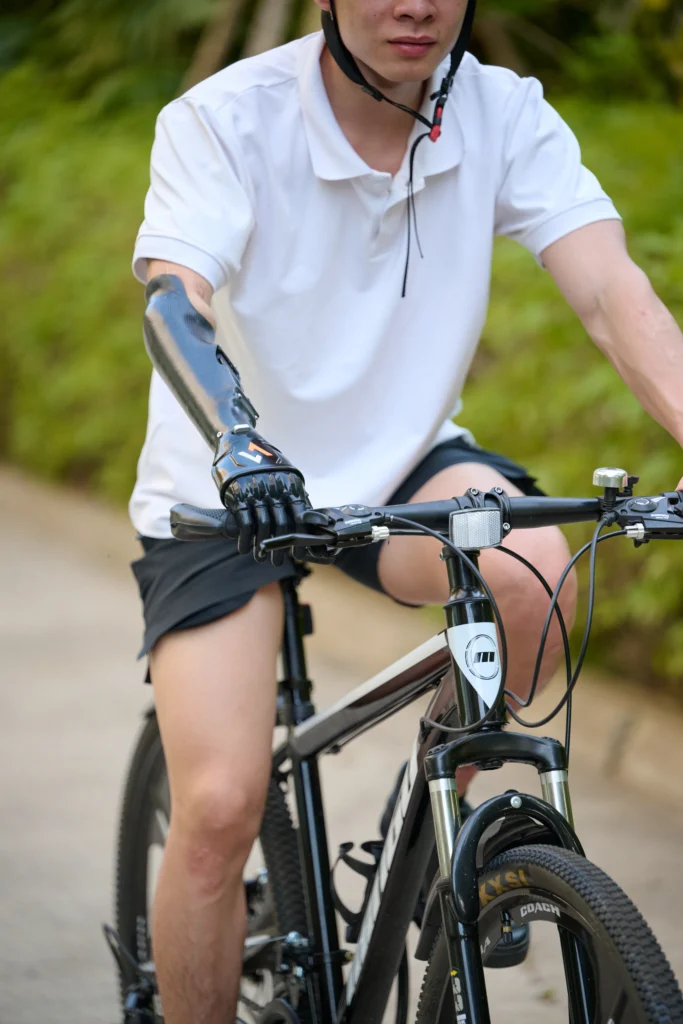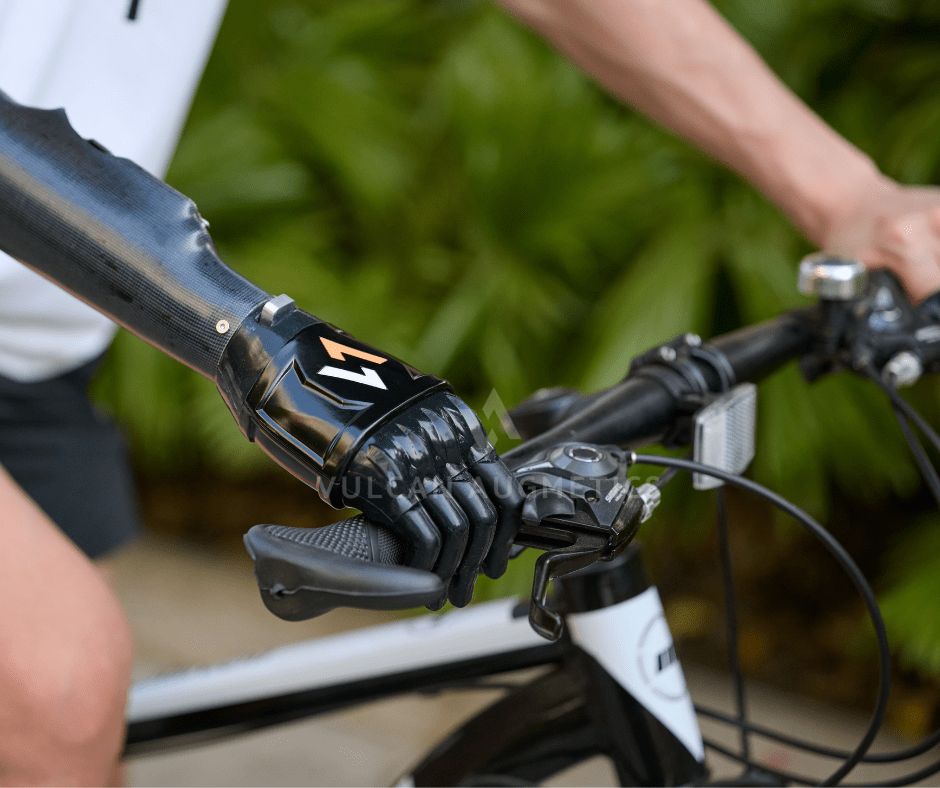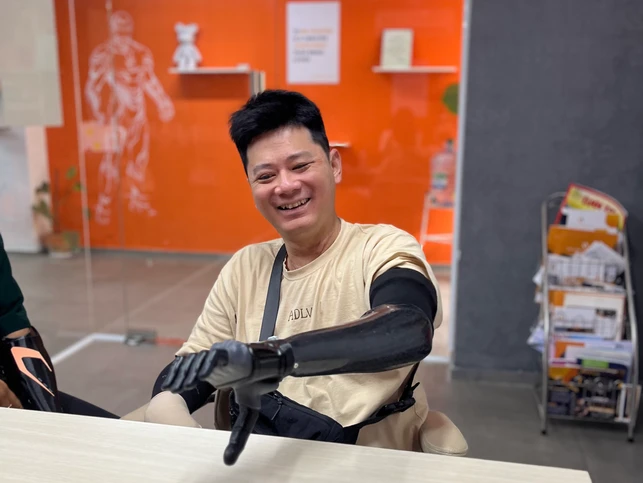Biking isn’t just for exercise or fun – it’s a vital way to get around for work, school, and daily life. For people with upper limb amputations, being able to ride a bike safely with a prosthetic arm is important for regaining independence and being active in their communities.
One big challenge is gripping the handlebars firmly.
Plus, losing a limb can change the way your body weight is distributed, making it harder to sit upright and feel secure while riding.

Vulcan Prosthetic Arm for Bike Riding
The Vulcan Prosthetic Arm is designed to help amputees overcome these challenges while biking.
One of its key features is the “Hook Grip,” which helps users hold the handlebars securely. This grip is important for safe riding, allowing for better control when braking, shifting gears, and making turns.

The Vulcan arm also has an adjustable wrist rotation feature, which helps users find the most comfortable and effective riding position. This reduces strain and discomfort, making bike rides more enjoyable.
Mastering Bike Riding with the Vulcan Prosthetic Arm
Getting used to a prosthetic arm takes time and practice. For biking, it’s important to build muscle strength and learn how to use both hands effectively.
Through Vulcan’s online Training Hub, users can engage in exercises that strengthen muscles, improve coordination, and boost confidence on the bike. Vulcan also offers helpful video tutorials on riding techniques and safety tips through the Vulcan App and YouTube channel.
Ready to ride again? Fill out the form to register for an experience day with Vulcan and take the first step towards a private consultation with our team!



